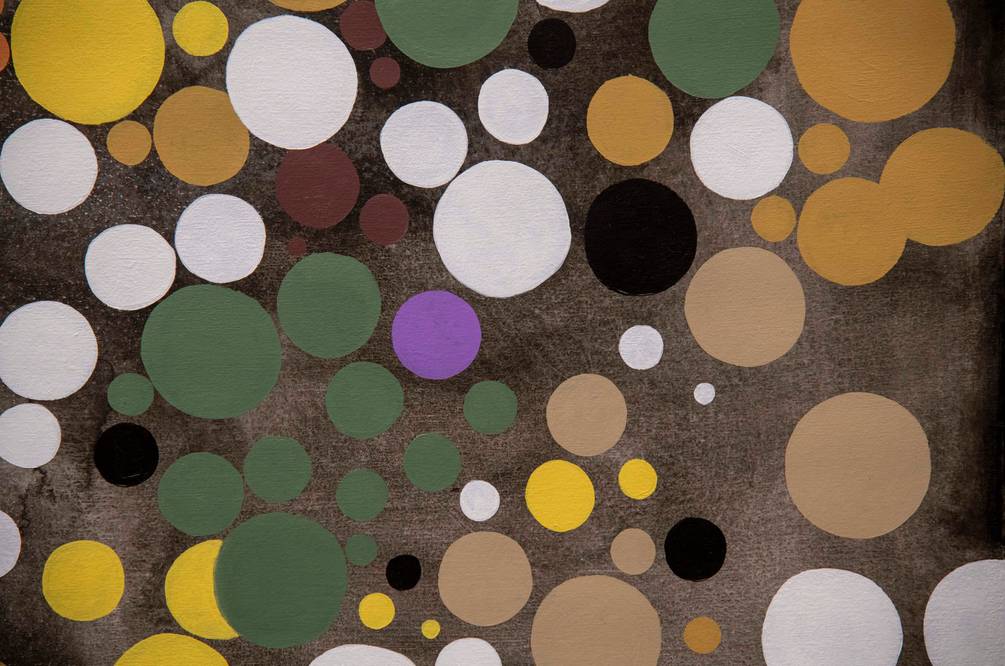
Yoshua Okón
Punto ciego
Exhibition
-> May 9 – Jun 8
Proyectos Monclova
Proyectos Monclova presents the exhibition Punto ciego by Yoshua Okón.
Yoshua Okón presents Blind Spot a work composed of paintings that highlight the limitations in human perception. With this, the artist reflects on visibility in images by emphasizing the brain's inability to perceive the entirety of the environment and, consequently, the limitations regarding our ideas about reality.
Okón starts from the Ishihara plates, a color test created by Japanese ophthalmologist
Shinobu Ishihara to detect color blindness using plates painted with dots of different sizes using various colors. Each plate contains symbols visible to trichromatic people, that is, those who can see the three primary colors, but not visible to colorblind individuals. Likewise, the ophthalmologist created reverse plates in which the symbols are visible to colorblind people and invisible to people with average vision.
Based on these latter plates and as a colorblind person himself, Okón creates ten large-format paintings showing points with subtle color variations. Each painting contains a letter, and together the ten works form a phrase that may or may not be seen depending on each person's chromatic abilities.
In this exhibition, Okón points towards limitations in visual perception and thus alludes to conceptual limitations and the role that ideology plays in making aspects of reality invisible.
The interest in the perception of reality is a theme that the artist has worked on throughout his career. Blind Spot thus offers a critique of the modern conception that has created the illusion that we can have total access to reality and, consequently, total control over the world and our destiny. A conception that, in turn, has resulted in an anthropocentric culture whose hubris has led to a world in crisis.
Once again, Yoshua Okón's work makes spectators protagonists of his work. The artist collaborates with the exhibition visitors by including them as an active part of decoding the symbols contained in the paintings as a whole. The pieces engage spectators by involving them in questioning the status of their own gaze.
— Yoshua Okón